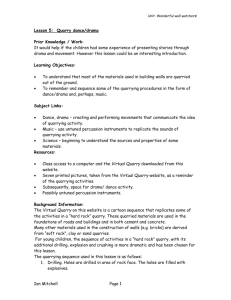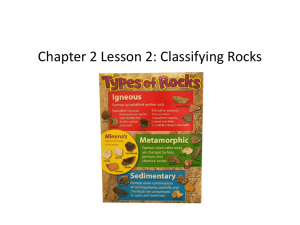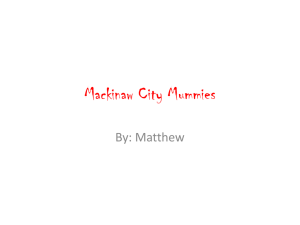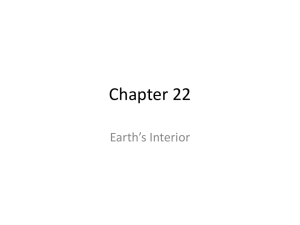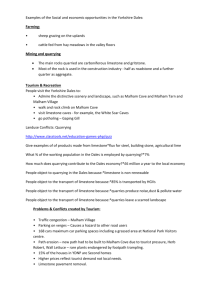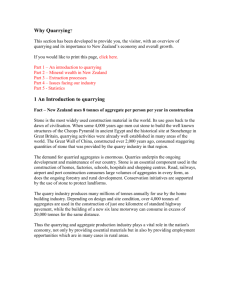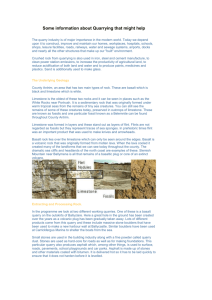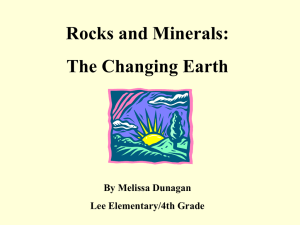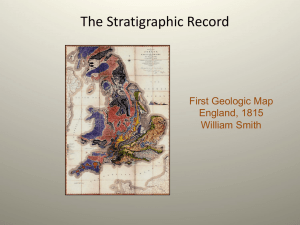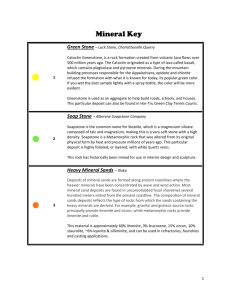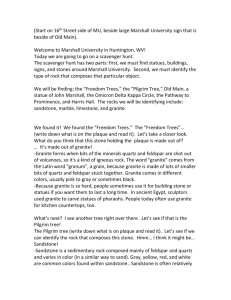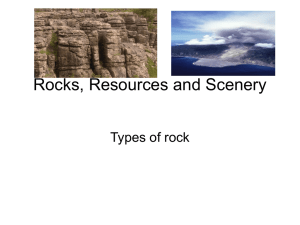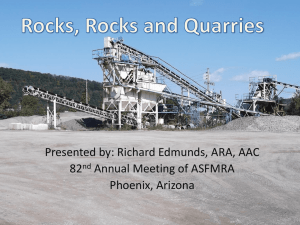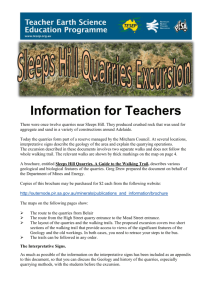Human Interaction with the Rock Cycle
advertisement
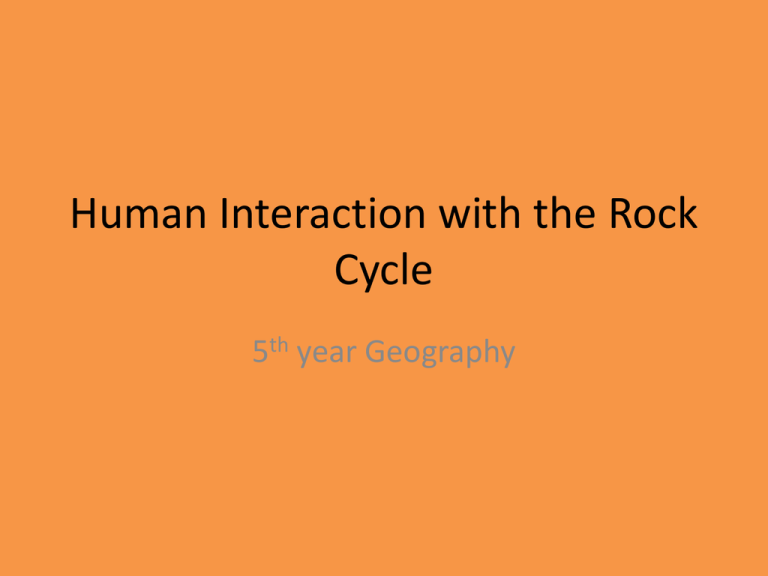
Human Interaction with the Rock Cycle 5th year Geography Learning Outcome • Identify the economic value and uses of Rocks • Examine Human Interaction with the Rock Cycle during the process of Quarrying Economic Value of Rocks • Recreation; Hill walking, Climbing • Tourism; Burren • Decorative Pieces; Fireplaces, Headstones, Worktops • Construction Materials; Gravel, Limestone • Metals; Lead, Zinc, Gold • Energy Source; Coal, Oil, Gas, Geothermal Uses of Certain Rocks Rock Use Basalt Road Chippings Sand Glass Limestone Fertiliser Slate Roofing Coal/Oil Heating China Clay Pottery Quarrying • Important Resources • Construction Industry • Granite, Limestone and Marble are the most common rocks quarried in Ireland What is Quarrying? • Removal of Rocks from the Earths Surface • 400 active quarries in Ireland • In recent year with the improved developments in infrastructure in Ireland, there has been an increased demand for quarried materials • Chapter 5: The Rock Cycle Methods of quarrying I. Plug and feather drilling holes split the rock extracting large pieces, e.g. floor covering II. Explosive extracting large and small pieces of rock III. Channelling machinery cuts large slices of rock metamorphic rock such as marble 5: The Rock Cycle Positive impactsChapter of quarrying Direct employment Construction Indirect employment Chapter 5: The Rock Cycle Negative impacts of quarrying Visual pollution Noise pollution Heavy machinery damage to infrastructure Dust pollution Water pollution Disused quarries Case Study; Carrara Marble Tuscany, Italy White or blue-grey marble Used since the time of ancient Rome Statue of David – Michelangelo Exported all around the world Construction of buildings Warm countries Reflect light Create an air of coolness Major Case Study • Tara Mines, Co Meath. Homework • Pg 59 – 61 • Q; 1, 6, 7, 10 • In Exercise Copy


